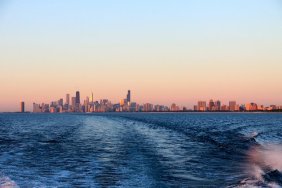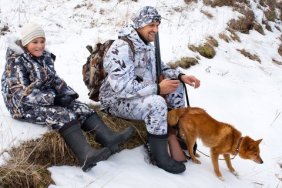 Canoes and other personal watercraft are a great way to enjoy the outdoors, but even a leisurely trip to your local lake or river can turn disastrous if you’re not prepared with the proper equipment. Today, we’ll take a look at some the essential pieces of equipment you’ll need when you venture out with your canoe.
Canoes and other personal watercraft are a great way to enjoy the outdoors, but even a leisurely trip to your local lake or river can turn disastrous if you’re not prepared with the proper equipment. Today, we’ll take a look at some the essential pieces of equipment you’ll need when you venture out with your canoe.
Obviously, you’ll need a canoe. There are different styles of canoe—whitewater, recreational, and racing, for example. There are also canoes that are meant to be paddled by one person and then there are some that can comfortably hold three people. Ultimately, though, the type of canoe you choose will depend on what type of paddling you plan on doing, how many people will be in the boat with you, and your level of experience.
You can't propel a canoe without a paddle, but you’ll want to make sure that you buy enough, which means more than just one. You need to purchase—or bring—at least one more than you need. Every canoeist should have an extra paddle with them secured in the canoe in case of an emergency.
Whenever watercraft are involved, you’ll want to make sure you have Personal Floatation Device (PFD), such as a life jacket or life preserver, for each person on board. You'd be surprised how many people don't think of PFD’s when they consider their canoe equipment purchases, but they’re so crucial. In fact, it’s actually illegal in many states to paddle without a PFD, so be sure to not only pick one up, but familiarize yourself with it. A throwable floatation device of some kind is a great thing to have, as well, and is required of any craft over 16-feet long. You never know when you may need to throw someone a flotation device to rescue them from drowning.
If you plan on whitewater canoeing, float bags and helmets are not only a good idea, but also a requirement in some places. Float bags tie securely in place at the bow (front) and stern (back) of your canoe and prevent it from sinking if you should flip. Helmets, obviously, protect your head from injury when you’re paddling through rocky waters. I would also bring along a rope bag, which, as its name implies, is a bag of rope that comes in handy if someone falls overboard and you need to reach them from a distance.
Some may think that canoeing isn’t very risky, and if you’re safe and responsible, they aren’t. However, you should always be prepared for the worse and the gear outlined above comprises what I believe to be essential for any canoe trip. We all want to enjoy the outdoors in our own way, but doing so safely by learning all you can, being mindful of your actions and surroundings, and arming yourself with the necessary gear will ensure you’re able to enjoy them for many years.
This article is brought to you by Energizer Fusion Lights. These lights are a must have for your next camping trip with versatility and light weight design, it will make your next adventure that much brighter.








